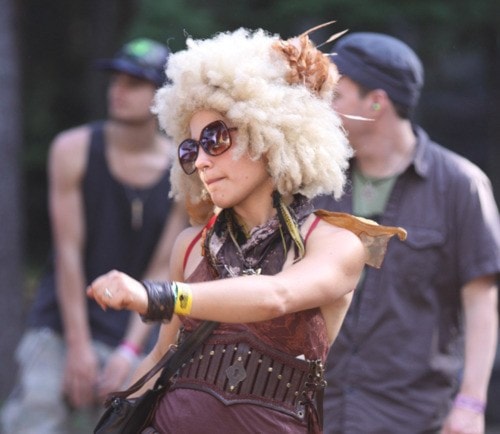For three days over the past 14 years, the Shambhala Music Festival has become the equivalent of a small town with over 10,000 people pouring into the area. And even though organizers and fans rave about the festival’s success, RCMP sergeants Fred Mansveld and Derrick Donovan have seen the event’s dark side.
“I’ve worked a lot of places throughout BC where there were similar activities and things got better each year, but I don’t foresee that happening with this event. We’ve seen from our focus that things have gotten worse. We’ve been very fortunate, I believe, that there haven’t been more fatalities and serious injuries as a result,” said Sgt. Donovan with West Kootenay Traffic Services.
“In the three short years that I’ve been here the instances involving drugs at road safety checks surrounding Shambhala are going up by 20 to 30 per cent every year, which to me is concerning,” he said.
The West Kootenay Traffic Services worked in partnership with the West Kootenay Integrated Road Safety Unit on the “front lines” before, after and during Shambhala to ensure road safety, including road safety checks in the Salmo area.
“This year we ramped up our exodus enforcement. We were stopping vehicles in road safety checks to try and mitigate the risks and checking for impaired driving, and we did find people who were impaired leaving the site by drug or alcohol, or being impaired by fatigue,” said Sgt. Mansveld with the West Kootenay Integrated Road Safety Unit. “Some of these people look like they’ve gone through the ringer, and although it sounds funny; it translates to people driving off the road.”
Mansveld said that there was a major car accident near Fernie, where a vehicle that was carrying three people who had left Shambhala, collided with a cement truck.
“I’m sure there are numerous other accidents in the region and beyond because people are coming from the states, from Ontario, and all kinds of places,” he said.
One of the major concerns both Mansveld and Donovan have regarding Shambhala is the fatigued drivers leaving the event.
“Last year, after the festival, we were inundated with crashes, I believe there was a total of nine crashes, that we were able to track, some were serious, some were minor in nature, caused by people falling asleep who were tired and over exerted, and tried to make it home. If they’ve been partying all weekend they are a real hazard to other motorists on the highway, and we see that,” said Mansveld.
In addition to fatigued drivers, the road safety units see impaired drivers coming through their road checks both before and after the festival.
The RCMP is recommending charges for eight individual cases of possession of a controlled substance for the purpose of trafficking related to Shambhala.
“In my opinion, from what I’ve seen, a substantial amount of vehicles and people heading to that festival are of course there to have a good time, but also are going to partake in some kind of alcohol or drug use, and perhaps not everybody, but a lot of people are, and this is a big concern that we have, because this goes on for three days in the heat and then people leave,” said Mansveld.
“What we’re all concerned about is the open drug trafficking and the open drug and alcohol use takes place at the rave.”
He said that there are younger festival-goers who go to Shambhala to experiment with drugs for the first time and Mansveld is very concerned about this.
“Some of the drugs that are out there now, although people may think they are buying ecstasy they are not buying ecstasy. They are buying a cocktail of various drugs,” he said. “The people who are out there trafficking drugs are out there to make money, that’s their reason for being there, it’s not that they want everyone to have a really great time; they’re out there to make money.”
Mansveld said that ecstasy can often be made of a combination of methamphetamines, ketamine and ephedrine along with various other drugs.
“We have first evidence of numerous, numerous overdoses that have taken place there. As a matter of fact, I know there is a tent there to take care of that. That’s a huge concern, when you have that many people overdosing, and being treated,” he said.
Donovan and Mansveld feel that the police presence during Shambhala is a significant drain on police resources.
“Our province has less money, and it’s a high per centage of our resources that are spent on this activity both pre and post and I think if tax payers out there knew the true cost - from processing files to court time to the officers time being here from other parts of the province – they would share our concern,” said Donovan.
Despite the positive effect of Shambhala on local economies, he said that Salmo residents would rather not be the home of the festival.
“I would say at least 80 to 90 per cent of Salmo residents are opposed to having this festival, even though they know there is money coming into the community because of this event, it’s just not a festival they think should continue,” said Donovan.
